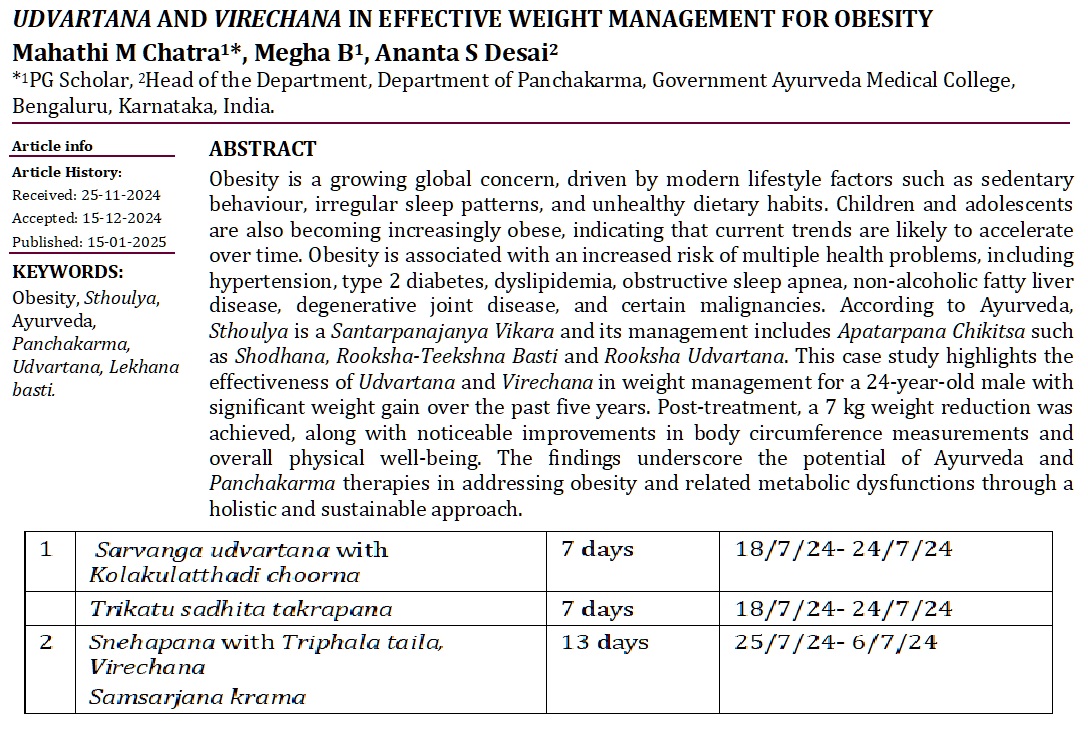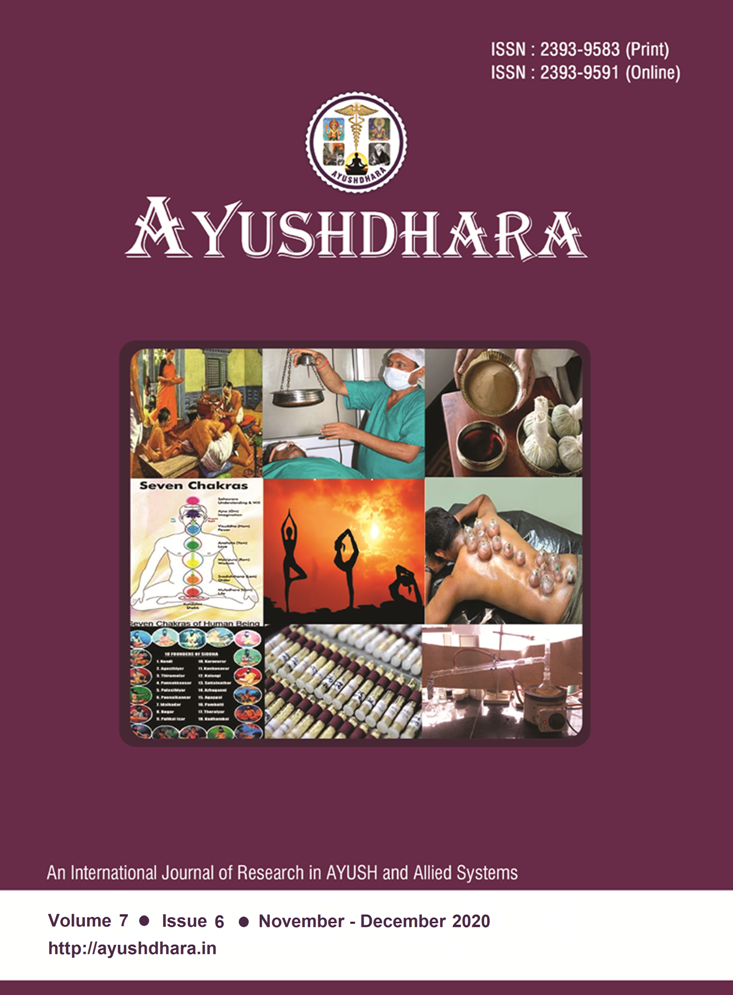Udvartana and Virechana in Effective Weight Management For Obesity
DOI:
https://doi.org/10.47070/ayushdhara.v11i6.1821Keywords:
Obesity, Sthoulya, Ayurveda, Panchakarma, Udvartana, Lekhana bastiAbstract
Obesity is a growing global concern, driven by modern lifestyle factors such as sedentary behaviour, irregular sleep patterns, and unhealthy dietary habits. Children and adolescents are also becoming increasingly obese, indicating that current trends are likely to accelerate over time. Obesity is associated with an increased risk of multiple health problems, including hypertension, type 2 diabetes, dyslipidemia, obstructive sleep apnea, non-alcoholic fatty liver disease, degenerative joint disease, and certain malignancies. According to Ayurveda, Sthoulya is a Santarpanajanya Vikara and its management includes Apatarpana Chikitsa such as Shodhana, Rooksha-Teekshna Basti and Rooksha Udvartana. This case study highlights the effectiveness of Udvartana and Virechana in weight management for a 24-year-old male with significant weight gain over the past five years. Post-treatment, a 7 kg weight reduction was achieved, along with noticeable improvements in body circumference measurements and overall physical well-being. The findings underscore the potential of Ayurveda and Panchakarma therapies in addressing obesity and related metabolic dysfunctions through a holistic and sustainable approach.
Downloads

Published
How to Cite
Issue
Section
Copyright (c) 2024 AYUSHDHARA

This work is licensed under a Creative Commons Attribution-NonCommercial-ShareAlike 4.0 International License.



